In our past three posts, we’ve talked about Women in Tech whose accomplishments have transcended the limitations of their time. Fortunately, it’s becoming clear that the public is opening up to women’s achievements, past and present, and is gradually willing to give them a stage. Around the world, women are achieving great things every day. This is why, in our latest Women in Tech article, we want to give you an nudge to look at many other women who have made, and are still making, significant contributions to the evolution of tech. In addition, they are role models for girls and women and many others around the world who are encouraged by their stories.
Women in Tech – Making role models visible
Hedy Lamarr
In 1941, Hedy Lamarr (née Hedwig Eva Maria Kiesler), together with George Antheil, invented a remote control for torpedoes that used simultaneous frequency hopping, making it much harder to interfere with from the outside. Today, this technique, officially known as frequency hopping, is important for technologies such as Bluetooth and WLAN.
In 1942, Lamarr and Antheil patented their invention and made the patent available to the U.S. Navy. They wanted to help the Allies in the war against the Nazis. But the Navy initially rejected the offer and did not return to it until 20 years later. In 1962, U.S. ships used frequency hopping to control their torpedoes during the Cuban Missile Crisis. Over time, the method was further developed and is now considered the basis for Bluetooth, WLAN and other communication methods.
As with so many women we have talked about, and will talk about in this post, Lamarr’s work was appreciated very late. It wasn’t until the late 20th century that there was public recognition of the value her invention had for the general public.
The Austrian was actually known for her acting career. In her first Hollywood film, she caused scandal by performing nude scenes and was marketed by her studio as the most beautiful woman in the world. She certainly felt the downside of this role assignment in many ways, but a well-known one is that producers forbade her to talk about her inventions. This was probably one of the reasons why her numerous inventions went unnoticed.

Bildquelle: Employee(s) of MGM, Public domain, via Wikimedia Commons
Jean Bartik and the women of ENIAC
Working on the world’s first computers must have been incredibly exciting. The first electronic general-purpose computer, ENIAC, weighed a whopping 27 tons, ran on punched cards and consumed so much power that rumors persisted that the lights in Philapelphia dimmed when the computer was on. The women who worked on it pioneered programming and early computer technology.
Jean Bartik was one of the so-called ENIAC women and not only programmed it, but also its successor, BINAC. She also worked on improving the performance of the computers and created a backup system for the commercial computer UNIVAC1. Jean Bartik also helped to develop the FORTRAN programming language, which Dorothy Vaughan also needed in her work.
Nevertheless, her name was unknown for a long time because women’s work was not recognized as an achievement. While Jean Bartik’s name has been more in the public eye in recent years, the other women who worked with her at ENIAC have been mentioned less frequently. Their names were Kathleen Antonelli, Adele Goldstine, Betty Snyder, Marlyn Wescoff, Frances Spence (née Bilas) and Ruth Teitelbaum..
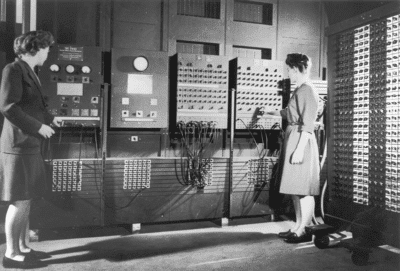
Bildquelle: Unidentified U.S. Army photographer, Public domain, via Wikimedia Commons
Margaret Hamilton
Margaret Hamilton was at NASA between 1965 and 1976, where she became director of Apollo Flight Computer Programming. At a time when there was no education that could have taught her how to work with or write software, she created the foundations of modern software architecture and was instrumental in the success of NASA’s Apollo missions.
Hamilton was also the one who coined the term “software engineer. In an interview with the Spanish online magazine Verne, she said that in her time, software programming was still perceived as something that seemed like magic. As a result, using the two terms together was unusual and initially ridiculed. Hamilton had wanted to express that there was a need for a serious, structured approach to software programming.
That structure was definitely needed, too, because the Flight Computer Programming team on the Apollo missions faced some big challenges. Not enough that they were programming computers that would carry humans into space and to the moon, no, these computers were also ridiculously low on memory from today’s perspective. So the reliability of the software and the priority-driven execution of programs were of elementary importance.
This was demonstrated, for example, during the Apollo 11 landing on the moon. Three minutes before landing, the Eagle space shuttle’s computer was suddenly overloaded because an error caused it to compute additional data that was not needed. Thanks to Hamilton’s work, the computer was able to put those unnecessary tasks on hold and focus on what was really important: The landing.
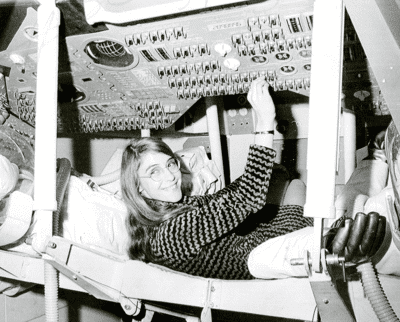
Bildquelle: NASA, Public domain, via Wikimedia Commons
Radia Perlman
Radia Perlman invented, among other things, the Spanning Tree Protocol (STP), which is a foundation for modern Ethernet. She has also done significant work in other areas of network standardization and design, such as routing in the presence of network faults and link-state protocols.
Her books have served, and still serves, many programmers as a basis for work and research. Her work is also a wonderful example of how beneficial it is when people with different experiences work on projects, because it was her individual perspective that enabled her flexible and universal approaches to solving problems.
Perlman still works on comprehensive routing protocols and network security projects. She attaches great importance to ensuring that her inventions and developments are as user-friendly as possible. We would like to recommend the numerous interviews with Radia Perlman, in which she not only talks about her inventions and her work, but also about her career, which differs from that of many other successful women in tech.
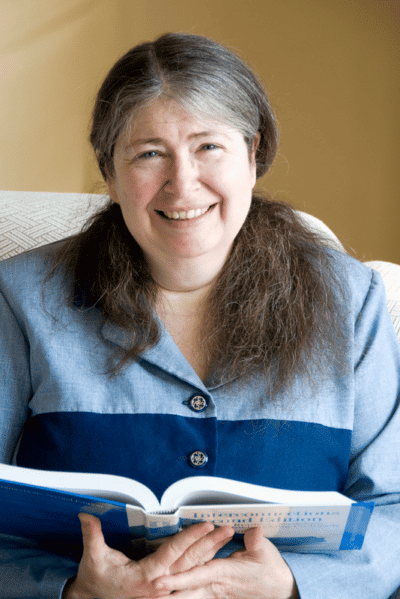
Bildquelle: Scientist-100 at English Wikipedia, Public domain, via Wikimedia Commons
Dame Wendy Hall
Dame Wendy Hall is a computer scientist who, with her research group, designed the Microcosm hypermedia system in 1988 that preceded the World-Wide Web. She pioneered digital libraries and the Semantic Web, and promotes Web science as a research discipline. This is the area in which she is most involved today, but she is also a strong advocate for the advancement of women in STEM fields.
From today’s perspective, the work on Microcosm doesn’t look particularly impressive at first glance: Essentially, Hall was concerned with multimedia and hypermedia, in short, media and how to link them together in a meaningful way. What is impressive and important about this work is the time at which it took place. What is taken for granted today was then something that many people in Hall’s environment even doubted could be useful.
What we were trying to do was science fiction.
Over the course of her career, Hall founded several companies and won multiple awards for her work in computer science and web science. Her extensive expertise makes her one of the most influential people in the politics of Web science and related fields today. Among other things, she is a director of the Web Science Trust, co-chair with Tim Berners-Lee, Regius Professor at the University of Southampton, and holds several other chair positions. She also speaks frequently about her career and current developments, encouraging other women to follow her example.
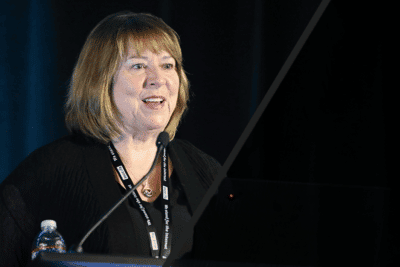
Bildquelle: Victor Grigas, CC BY-SA 4.0, via Wikimedia Commons
Shafrira Goldwasser
Shafrira Goldwasser is a computer scientist who is particularly known for having been involved in the invention of zero-knowledge proof, an important cryptography protocol. In very simplified terms, in the zero-knowledge proof, party A proves to party B that party A knows about a certain secret without revealing the secret to party B.
Goldwasser works on complexity theory, algorithmic number theory, and cryptography and its role in machine learning and AI security. She was awarded the Gödel Prize in theoretical computer science for her work on the zero-knowledge proof and the PCP theorem. In 2012, she received the Turing Award for creating complexity-theoretic foundations for cryptography. She is a member of several scientific academies and a professor at the Weizmann Institute.
Goldwasser’s work is highly topical and will be with us for many years to come. We encourage you to watch one of her talks, for example, from 2019, which is about cryptography and machine learning.
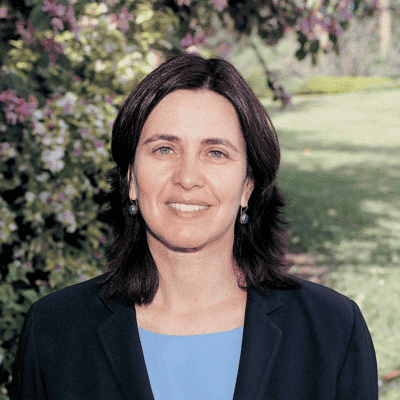
Bildquelle: Weizmann Institute of Science, Public domain, via Wikimedia Commons
Women in Tech – heading towards a diverse future?
All the women we have introduced to you here are role models for many young people around the world. Through this role model function, they help girls and women in particular to pursue careers in tech. By the way: the low proportion of women in tech professions is directly related to the gender pay gap, i.e. the fact that women are often paid less than men. Although it is certainly still the case here and there that women and men in the same company receive different salaries for the same qualifications, the real problem lies deeper: jobs in which there is a particularly large proportion of women, often social professions, are paid much less than, for example, professions in the tech industry.
Another problem is also very clear in this article: ethnic diversity is still missing from media coverage. In our case, it’s because it was much harder to find fitting examples and information, apart from the Black women who worked as computers at NASA. So equal representation and therefore sufficient role models for all girls is still a long way off.
In short, there is still a lot of work to be done before Women in Tech are a given, but the road ahead will be enlightening, exciting, and rewarding.
Is there a woman you would have liked to see on this list? Have you perhaps been inspired by one of our Women in Tech yourself? We’d love to hear your comments.
Resources:
We’ve collected some links for you that can help you learn more about Women in Tech.
10 most influential women in the tech industry 2021 by Kapersky.
Forbes 30 Under 30 in Science 2021
Various Women in Tech articles from TechChrunch
Short podcast about the book Women who made the Internet from ScienceFriday and an article from The Verge, both with author Claire Evans
Tedx talk by Kimberly Bryant– engineer and founder of Black Girls Code.
Mit besten Grüßen
Header: iStock.com/Johnny Greig, edited color.